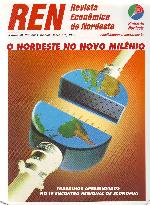TRAJETÓRIA RECENTE DA INADIMPLÊNCIA RURAL: NORDESTE VERSUS BRASIL
DOI:
https://doi.org/10.61673/ren.1999.1949Keywords:
Rural Credit Defaulting, RenegotiationAbstract
The stabilization Real Plan in Brazil has caused an increase in the agriculture credit default rate from 22.9% in July 1994 to 38.8% in December 1995, and reached 54.9% in September. This is a result of the price stabilization which altered the economic production process from rent seeking to profit seeking, as well as the economic and financial relations. Among others, two factors are crucial to determine the default rate: prices received and paid by farmers, and financial marked interest rate. The first factor denotes agriculture supply and the second, the opportunity cost of the credit granted to farmers. Single equation and simultaneous equations models were estimated to explain the default growth rate in the period 1991- 1997 in a comparative analysis between the northeastern region and Brazil. The results demonstrated that to Brazil, on contrary to Northeast region, the agriculture default is heavily dependent on both renegotiations facilities and financial market interest rate. Although the price effect is relevant, the interest rate effect overlays it.








